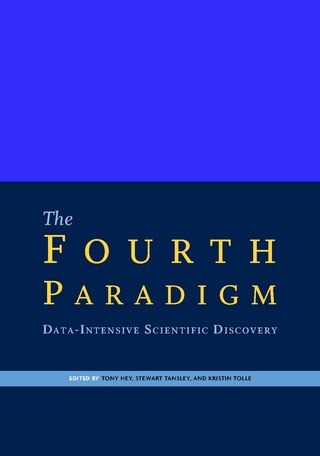Related Research Articles

A library is a collection of materials, books or media that are accessible for use and not just for display purposes. A library provides physical or digital access materials, and may be a physical location or a virtual space, or both. A library's collection can include printed materials and other physical resources in many formats such as DVD, CD and cassette as well as access to information, music or other content held on bibliographic databases.

Numeracy is the ability to understand, reason with, and to apply simple numerical concepts. The charity National Numeracy states: "Numeracy means understanding how mathematics is used in the real world and being able to apply it to make the best possible decisions...It’s as much about thinking and reasoning as about 'doing sums'". Basic numeracy skills consist of comprehending fundamental arithmetical operations like addition, subtraction, multiplication, and division. For example, if one can understand simple mathematical equations such as 2 + 2 = 4, then one would be considered to possess at least basic numeric knowledge. Substantial aspects of numeracy also include number sense, operation sense, computation, measurement, geometry, probability and statistics. A numerically literate person can manage and respond to the mathematical demands of life.
The Association of College and Research Libraries defines information literacy as a "set of integrated abilities encompassing the reflective discovery of information, the understanding of how information is produced and valued and the use of information in creating new knowledge and participating ethically in communities of learning". In the United Kingdom, the Chartered Institute of Library and Information Professionals' definition also makes reference to knowing both "when" and "why" information is needed.
E-Science or eScience is computationally intensive science that is carried out in highly distributed network environments, or science that uses immense data sets that require grid computing; the term sometimes includes technologies that enable distributed collaboration, such as the Access Grid. The term was created by John Taylor, the Director General of the United Kingdom's Office of Science and Technology in 1999 and was used to describe a large funding initiative starting in November 2000. E-science has been more broadly interpreted since then, as "the application of computer technology to the undertaking of modern scientific investigation, including the preparation, experimentation, data collection, results dissemination, and long-term storage and accessibility of all materials generated through the scientific process. These may include data modeling and analysis, electronic/digitized laboratory notebooks, raw and fitted data sets, manuscript production and draft versions, pre-prints, and print and/or electronic publications." In 2014, IEEE eScience Conference Series condensed the definition to "eScience promotes innovation in collaborative, computationally- or data-intensive research across all disciplines, throughout the research lifecycle" in one of the working definitions used by the organizers. E-science encompasses "what is often referred to as big data [which] has revolutionized science... [such as] the Large Hadron Collider (LHC) at CERN... [that] generates around 780 terabytes per year... highly data intensive modern fields of science...that generate large amounts of E-science data include: computational biology, bioinformatics, genomics" and the human digital footprint for the social sciences.
Statistical literacy is the ability to understand and reason with statistics and data. The abilities to understand and reason with data, or arguments that use data, are necessary for citizens to understand material presented in publications such as newspapers, television, and the Internet. However, scientists also need to develop statistical literacy so that they can both produce rigorous and reproducible research and consume it. Numeracy is an element of being statistically literate and in some models of statistical literacy, or for some populations, it is a prerequisite skill. Being statistically literate is sometimes taken to include having the abilities to both critically evaluate statistical material and appreciate the relevance of statistically-based approaches to all aspects of life in general or to the evaluating, design, and/or production of scientific work.

The following outline is provided as an overview of and topical guide to library science:

Data and information visualization is the practice of designing and creating easy-to-communicate and easy-to-understand graphic or visual representation of a large amount of complex quantitative and qualitative data and information from a certain domain of expertise with the help of static, dynamic or interactive visual items for a broader audience to help them visually explore and discover, quickly understand, interpret and gain important insights into otherwise difficult-to-identify structures, relationships, correlations, local and global patterns, trends, variations, constancy, clusters, outliers and unusual groupings within data. When intended for the general public to convey a concise version of known, specific information in a clear and engaging manner, it is typically called information graphics.
Serials Solutions was a division of ProQuest that provided e-resource access and management services (ERAMS) to libraries. These products enabled librarians to more easily manage electronic resources that serve the needs of their users. Serials Solutions became part of ProQuest Workflow Solutions in 2011 and the "Serials Solutions" name was retired in 2014. In 2015, Proquest acquired Ex Libris Group, a library automation company with many similar products to those of ProQuest Workflow Solutions. The Workflow Solutions division was to be merged with Ex Libris into a new business group called "Ex Libris, a ProQuest Company".
Digital literacy is an individual's ability to find, evaluate, and communicate information by utilizing typing or digital media platforms. It is a combination of both technical and cognitive abilities in using information and communication technologies to create, evaluate, and share information.
Library instruction, also called bibliographic instruction, user education and library orientation, consists of "instructional programs designed to teach library users how to locate the information they need quickly and effectively. [It] usually covers the library's system of organizing materials, the structure of the literature of the field, research methodologies appropriate to the academic discipline, and specific resources and finding tools " It prepares individuals to make immediate and lifelong use of information effectively by teaching the concepts and logic of information access and evaluation, and by fostering information independence and critical thinking. Above all they are aimed at equipping library users with skills to locate library sources and use them effectively to satisfy their information needs.
Critical reading is a form of language analysis that does not take the given text at face value, but involves a deeper examination of the claims put forth as well as the supporting points and possible counterarguments. The ability to reinterpret and reconstruct for improved clarity and readability is also a component of critical reading. The identification of possible ambiguities and flaws in the author's reasoning, in addition to the ability to address them comprehensively, are essential to this process. Critical reading, much like academic writing, requires the linkage of evidential points to corresponding arguments.

Reading is the process of taking in the sense or meaning of letters, symbols, etc., especially by sight or touch.

Metadata is "data that provides information about other data", but not the content of the data, such as the text of a message or the image itself. There are many distinct types of metadata, including:
E-Science librarianship refers to a role for librarians in e-Science.

Astroinformatics is an interdisciplinary field of study involving the combination of astronomy, data science, machine learning, informatics, and information/communications technologies. The field is closely related to astrostatistics.

Data science is an interdisciplinary academic field that uses statistics, scientific computing, scientific methods, processes, algorithms and systems to extract or extrapolate knowledge and insights from noisy, structured, and unstructured data.
The Programme for the International Assessment of Adult Competencies (PIAAC) is a worldwide study by the Organisation for Economic Co-operation and Development (OECD) in 24 countries of cognitive and workplace skills. The main aim is to be able to assess the skills of literacy, numeracy and problem solving in technology-rich environments, and use the collected information to help countries develop ways to further improve these skills. The focus is on the working-age population. The first data was released on October 8, 2013. A new PIAAC survey is expected to be published in 2021/2022.
Graph literacy is the ability to understand information that presented graphically, which are including general knowledge about how to extract information and make inferences from different graphical formats. Although related, graph literacy is distinct from other forms of literacy in the sense that it relates more specifically to one's ability to obtain meaning from information presented graphically. It can include the storage of mental representations in long-term memory, knowledge about the properties of different types of formats, and procedures to interpret them. However, similar to other types of literacy, higher graph literacy is associated with higher education levels and suggests that developing the skills required to interpret graphical information requires knowledge that is acquired through formal education and experience.
NASIG is an independent professional association of librarians and academic publishing professionals, working to advance and transform the management of information resources in all formats and business models, with an emphasis on scholarly communications, serials and electronic resources. Founded in 1985, NASIG is registered in the state of New York as a 501(c)(3) non-profit organization.

The Fourth Paradigm: Data-intensive Scientific Discovery is a 2009 anthology of essays on the topic of data science. Editors Tony Hey, Kristin Michele Tolle, and Stewart Tansley claim in the book's description that it presents the first broad look at the way that increasing use of data is bringing a paradigm shift to the nature of science.
References
- ↑ Baykoucheva, Svetla (2015). Managing Scientific Information and Research Data. Waltham, MA: Chandos Publishing. p. 80. ISBN 9780081001950.
- ↑ Hey, A. J.; Tony Hey; Tansley, S.; Tolle, K., eds. (2009). The fourth paradigm: data-intensive scientific discovery. Microsoft.
- ↑ "Open Data Philly" . Retrieved 14 June 2013.
- ↑ Na, L. & Yan, Z. (2013). "Promote Data-intensive Scientific Discovery, Enhance Scientific and Technological Innovation Capability: New Model, New Method, and New Challenges Comments on" The Fourth Paradigm: Data-intensive Scientific Discovery". Bulletin of Chinese Academy of Sciences. 1 (16).
- ↑ Stanley, Deborah B. (2018-07-11). Practical Steps to Digital Research: Strategies and Skills For School Libraries. Santa Barbara, CA: ABC-CLIO. p. 275. ISBN 9781440856723.
- 1 2 Carlson, Jake; Johnston, Lisa (2015). Data Information Literacy: Librarians, Data, and the Education of a New Generation of Researchers. West Lafayette, Indiana: Purdue University Press. p. 15. ISBN 9781557536969.
- ↑ Koltay, Tibor (2015). "Data literacy for researchers and data librarians" (PDF). Journal of Librarianship and Information Science. 49 (1): 3–14. doi:10.1177/0961000615616450. S2CID 36467384.
- ↑ Calzada-Prado, Francisco-Javier; Marzal, Miguel-Angel (2013). "Incorporating Data Literacy into Information Literacy Programs: Core Competencies and Contents". Libri. 63 (2): 123–134. doi:10.1515/libri-2013-0010. hdl: 10016/27173 . S2CID 62074807.